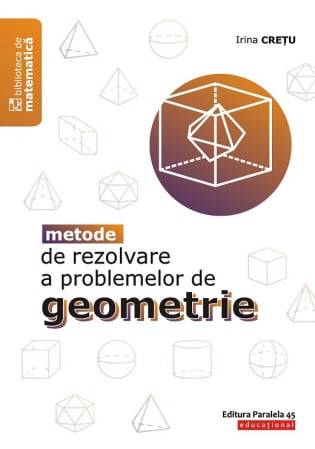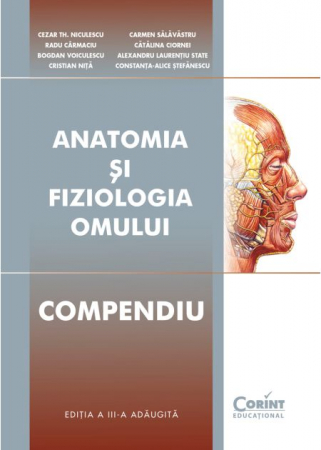ISBN: 978-606-591-307-3
DOI: 10.5682/9786065913073
Publisher year: 2011
Edition: I
Pages: 285
Publisher: Editura Universitară
Author: Tatiana Corina Dosescu
- Description
- Download (1)
- Authors
- Content
- More details
- Reviews (0)
This volume is addressed to students or master economists, whose professional training involves the formation of skills in the field of analysis and processing of quantitative, qualitative or mixed information, an objective that can not be achieved without the accumulation of mathematical knowledge and learning to use algorithms and more and more advanced mathematical methods.
The content of this paper is a first offer of mathematics chapters, necessary for a solid training of economics students, to be able to solve current problems of economic practice.
The volume contains four chapters: "NOTIONS REGARDING SCIENTIFIC MODELING", "ELEMENTS OF LINEAR ALGEBRA", "ELEMENTS OF LINEAR PROGRAMMING" and "ELEMENTS OF MATHEMATICAL ANALYSIS AND APPLICATIONS".
The first chapter presents a definition of the model and scientific modeling, followed by classifications of the models. Chapter two exposes the notion of linear algebra necessary for chapter 3 in which are exposed the fundamental theoretical results necessary for an economic modeling, in which the linear or proportional approach of the economic phenomenon predominates, and the content of the fourth chapter refers to the apparatus created by mathematical analysis for modeling in which the functional deterministic approach is dominant. The four chapters are part of the theme, which has become a classic, typical of an analytical program of any faculty with an economic profile.
-
Matematica pentru modelare economica - vol. I
Download
Chapter 1. NOTIONS REGARDING SCIENTIFIC MODELING / 11
1.1 Model, modeling / 11
1.2 A definition of the model in science / 11
1.3 A classification of models in science / 13
1.4 Mathematical modeling, mathematical model / 14
1.5 Economic modeling, economic model / 15
1.6 Economic-mathematical modeling, economic-mathematical model / 16
1.7 A classification of economic-mathematical models / 17
Chapter 2. ELEMENTS OF LINEAR ALGEBRA / 18
2.1 Basic notions of linear algebra / 18
2.2 Linear combination of vectors / 20
2.3 Independent linear vectors. Dependent linear vectors / 21
2.4 Characterizations of dependent linear vectors / 22
2.5 Generator systems / 23
2.6 The basis of a vector space / 24
2.7 Finite dimensional vector spaces (of finite type) / 24
2.8 Switching from one base to another / 26
2.9 Gaussian Method - Jordan / 29
2.10 Linear subspaces / 36
2.11 Linear functional and bilinear functional / 38
2.12 Square functions. Reduction to the canonical form / 43
2.13 Problems solved / 49
2.14 Proposed issues / 64
Chapter 3. LINEAR PROGRAMMING ELEMENTS / 68
3.1 Types of linear programming problems / 68
3.1.1 Optimal organization of production / 68
3.1.2 Optimal planning of raw material consumption / 70
3.2 Various forms of the mathematical model / 72
3.2.1 General form / 72
3.2.2 Canonical form / 73
3.2.3 Standard form / 73
3.3 Solutions of a linear programming problem / 75
3.4 Graphical method for solving a linear programming problem / 83
3.5 The primal simplex algorithm / 85
3.6 Stages of the primal simplex algorithm / 92
3.7 Convergence of the primal simplex algorithm. Degeneration. Cycling / 98
3.8 Penalty method (artificial base method) / 100
3.9 Duality in linear programming / 106
3.10 The duality theorem / 108
3.11 The problem of transport (distributors) / 112
3.12 Methods for determining a possible basic, initial solution / 117
3.13 Potential method for determining an optimal solution / 122
3.14 Problems Solved / 126
3.15 Proposed issues / 138
Chapter 4. ELEMENTS OF MATHEMATICAL ANALYSIS AND APPLICATIONS / 141
4.1 Binary relation and equivalence relation / 141
4.2 The cardinal of a crowd / 143
4.3 Countable sets and countless sets / 144
4.4 Order relationship. Ordered sets / 144
4.5 Maximum element, minimum element / 145
4.6 Upper edge, lower edge / 146
4.7 Margined sets in R / 147
4.8 Numeric strings / 147
4.9 Numeric series / 150
4.10 Alternate series / 153
4.11 Absolutely convergent series / 154
4.12 Series with positive terms / 154
4.13 Proposed exercises / 159
4.14 Real function strings / 163
4.15 Simple convergence, uniform convergence / 164
4.16 Criteria for uniform convergence / 165
4.17 Properties of uniformly convergent function strings / 166
4.18 Series of real functions / 169
4.19 Operations with series of functions / 172
4.20 The rest of a series of functions / 172
4.21 Uniform convergence criteria / 172
4.22 Properties of uniformly convergent series of functions / 174
4.23 Series of powers / 176
4.24 Properties of power series / 180
4.25 Taylor Series / 181
4.26 Taylor's formula / 182
4.27 Limited development of order n / 183
4.28 Serial developments / 185
4.29 Proposed exercises / 187
4.30 Topology. Topological space / 193
4.31 Open sets / 194
4.32 Closed sets / 195
4.33 Compact sets / 197
4.34 Continuous functions on topological spaces / 198
4.35 Properties of continuous functions on compact sets / 198
4.36 Standard. Standard spaces / 199
4.37 Proposed exercises / 200
4.38 Convergent string in (V, T) / 202
4.39 Vector functions of the vector variable / 203
4.40 Limit of a vector function of vector variable / 204
4.41 Iterated limits / 204
4.42 Partial functions. Partial continuity / 205
4.43 Partial derivatives / 206
4.44 Application in microeconomic modeling of the utility of goods / 208
4.45 Higher order partial derivatives / 208
4.46 Application to utility modeling / 209
4.47 Schwarz's criterion / 209
4.48 Differentiability / 212
4.49 Differential / 213
4.50 Differential and partial derivatives of compound functions / 216
4.51 Taylor's formula for functions of several real variables / 217
4.52 The extremes of the functions of several variables / 218
4.53 Algorithm for determining local extreme points / 222
4.54 Algorithm for determining local extreme points (general case) 224 4.55 Applications in microeconomic modeling / 225
4.56 Smallest squares method / 226
4.57 Default functions / 229
4.58 Default function systems / 231
4.59 Regular transformations / 233
4.60 Functional dependency / 234
4.61 Extremes with connections / 236
4.62 Proposed exercises / 238
4.63 Generalization of the Riemann integral on non - compact intervals (generalized integrals) / 257
4.64 Convergence criteria / 260
4.65 Integrals with parameter on compact range / 261
4.66 Integrals with non-compact interval parameter / 263
4.67 Eulerian integrals (special functions) / 264
4.68 Integral double / 270
4.69 Calculation of the double integral / 274
4.70 Changing variables to double integral / 277
4.71 Proposed exercises / 279
BIBLIOGRAPHY / 286
Economic modeling is an occupation of those qualified in processing information in the economic field, in order to increase efficiency, added value, substantiate the decision and achieve many other objectives.
The complexity of economic phenomena requires the completion of economic modeling, which results in the economic model, with a mathematical modeling whose product is the economic-mathematical model, able to provide solutions to optimization problems, strategy, forecasting or those that take into account factors random present in the real economy.
This volume is addressed to students or master economists, whose professional training involves the formation of skills in the field of analysis and processing of quantitative, qualitative or mixed information, an objective that can not be achieved without the accumulation of mathematical knowledge and learning to use algorithms and more and more advanced mathematical methods.
The content of this paper is a first offer of mathematics chapters, necessary for a solid training of economics students, to be able to solve current problems of economic practice.
The volume contains four chapters: "NOTIONS REGARDING SCIENTIFIC MODELING", "ELEMENTS OF LINEAR ALGEBRA", "ELEMENTS OF LINEAR PROGRAMMING" and "ELEMENTS OF MATHEMATICAL ANALYSIS AND APPLICATIONS".
The first chapter presents a definition of the model and scientific modeling, followed by classifications of the models. Chapter two exposes the notion of linear algebra necessary for chapter 3 in which are exposed the fundamental theoretical results necessary for an economic modeling, in which the linear or proportional approach of the economic phenomenon predominates, and the content of the fourth chapter refers to the apparatus created by mathematical analysis for modeling in which the functional deterministic approach is dominant. The four chapters are part of the theme, which has become a classic, typical of an analytical program of any faculty with an economic profile.
The way of presenting the content of the two chapters strives to combine mathematical accuracy with accessibility, without compromising the characteristic rigor of any scientific approach.
This book is the beginning of a series of works whose aim is to provide mathematical methods and models, which will contribute to a thorough training of future specialists in the economic field.

6359.png)
![Mathematics for Economic Modeling - Vol I [1] Mathematics for Economic Modeling - Vol I [1]](https://gomagcdn.ro/domains/editurauniversitara.ro/files/product/large/matematica-pentru-modelare-economica-vol-i-1797-47124.jpg)














